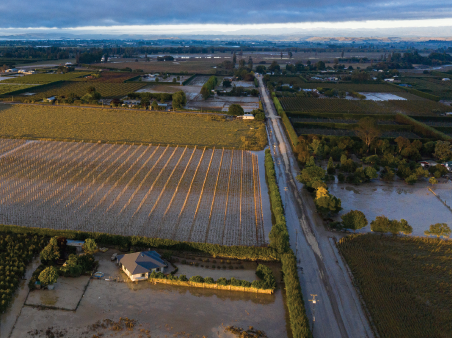The impact of Cyclone Gabrielle has been felt, and will continue to be felt by many, and across many sectors. Suffice to say that many families and businesses have been massively affected. From a resource management perspective, new legislation has been introduced to assist initial recovery responses, and various planning processes are likely to follow around consenting and new policy initiatives to better manage risks and ‘build back better’.
Where a natural disaster occurs, it is recognised that emergency discharges, for example, may occur, and the RMA sets down a process whereby such activities are then consented on a retrospective basis. The need for other activities to occur, that would otherwise require resource consent, is also common as part of any immediate response, and obviously it would not be practicable to wait for a resource consent application for such activities to be granted. Examples include the installation of culverts washed away, construction of temporary bridges and establishing silt dump sites.
Among other initiatives, the Severe Weather Emergency Recovery Legislation Bill widened the breadth of activities that could be undertaken under ‘emergency works’ and extended the timeframe for which retrospective consent applications for such activities need to be lodged. It also introduced new provisions to allow certain emergency activities to be undertaken by certain rural landowners and occupiers as a Permitted Activity. The general purpose of the Bill is to assist local authorities and communities in the areas affected by the severe weather events, and in particular, to:
■ Assist rebuilding and economic recovery,
■ Increase safety and resilience,
■ Ensure governmental activity can continue to be undertaken,
■ Temporarily enable the relaxation or flexible operation of some legislative requirements.
Part 2 of the Bill sets up a process whereby a Minister can recommend an Order in Council which exempts or modifies any legislation for the purpose of planning, rebuilding, and recovery of affected communities and persons.
This could include allowing activities that may otherwise be classified as prohibited to be considered as part of potential responses, such as the burning of certain materials, and providing an alternative (faster) process to standard RMA processes for specific recovery, rebuilding and resilience related activities or policies.
How resource management requirements have affected response efforts and whether enough has been done to assist recovery will draw different reactions and views, but those most affected by the impacts of the cyclone have no doubt been presented with a range of barriers including resource management requirements, and the impact of those barriers should not be underestimated.
Moving forward though, what can we expect in the resource management field?
There will be a number of retrospective resource consent processes for activities that have needed to occur as part of the immediate response and a number of resource consent processes for new activities. There may be new planning projects looking at different alignments for roads and railways and there will almost certainly be projects looking at risk management and land use planning within areas subject to risk.
What new land use controls may look like may differ between affected areas and are likely to be influenced by the degree of risk mitigation able to be established. Hawke’s Bays’ strength is its natural environment and diversity of industry, and although the impacts of the cyclone on those most affected cannot be cast aside, there is opportunity to think about what a more resilient Hawke’s Bay may look like, and opportunity in the Bill to carve out a process to enable these sort of things to be considered.
The term ‘build back better’ is frequently referred to, but what does ‘better’ mean, and who are we building back for? Let’s not overlook those who have been most affected, and let’s understand what build back better means for them as a starting point and make sure efforts are focused and prioritised for their benefit.



